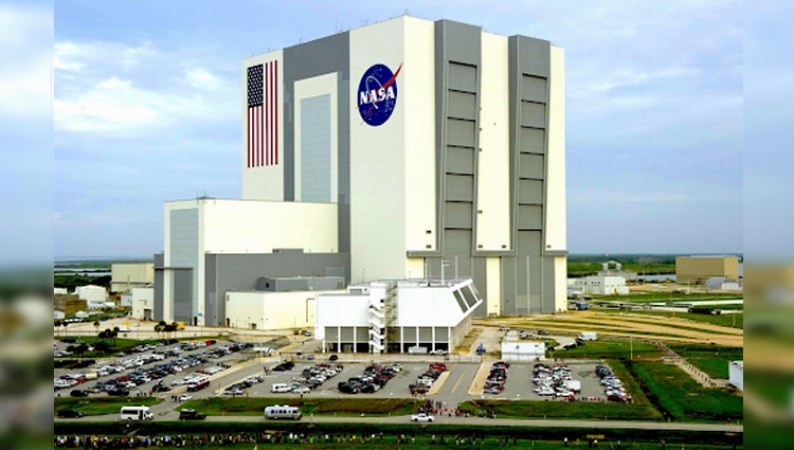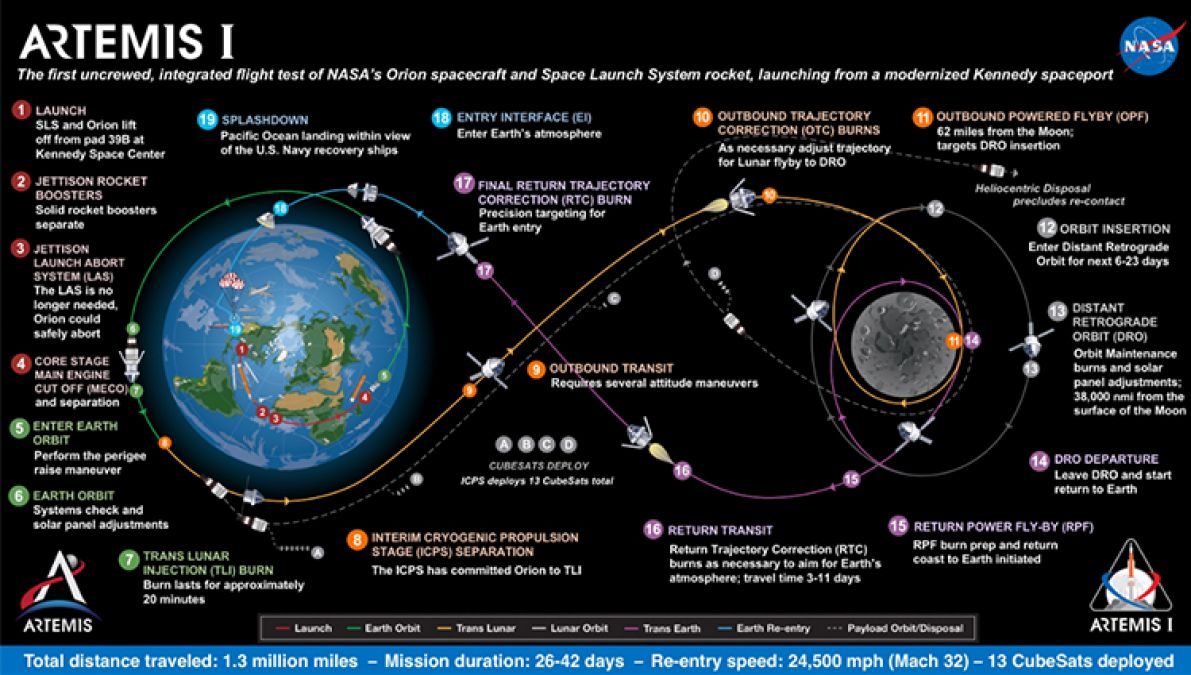
USA: Managers at NASA said the hardware is ready to go with one week left before the Artemis I rocket launches for its first attempt at the moon.
Prior to the first launch window, which opens at 08:33 on Monday morning next week, the massive Space Launch System rocket and Orion spacecraft atop the mobile launcher were moved to Launch Pad 39-B at the Kennedy Space Center last week.
After teams finished Monday's flight readiness review, NASA Associate Administrator Bob Cabana declared, "We are ready for launch." "This day has long been anticipated.... I'd like to put this in context. This flight is a test. It carries some risk. We have done the best we can to analyse the risk and to mitigate it.
If the rocket launch, which is expected to attract between 100,000 and 200,000 spectators to the Space Coast, is successful, it will surpass all previous rocket launches from Earth in terms of power. 8.8 million pounds of thrust are produced by the core stage in conjunction with two solid rocket boosters, outperforming the Saturn V rockets used in the Apollo moon missions.
The first of several missions, called Artemis I, aims to send people back to the moon's surface for the first time since Apollo 17 in 1972. Before returning to Earth in October for a splashdown in the Pacific Ocean, the unmanned flight will launch Orion on a 42-day mission that is expected to cover more than 1.3 million miles and orbit the moon several times.
Orion will travel 40,000 miles beyond the moon and 280,000 miles from Earth, setting a record for the farthest spacecraft rated for human use. Orion will break speed records on its return flight as well, reaching 24,500 mph during re-entry, which will produce temperatures around 5,000 degrees Fahrenheit.
This test flight will teach us a lot, according to Cabana. There are some circumstances that might arise and allow us to return home early. We have backup plans in place, but the main thing we want to accomplish with this test flight is to stress the heat shield and test the new Orion heat shield at lunar re-entry velocities.

Backup opportunities are available on Friday, September 2, and the following Monday, Labour Day, September 5, in case it fails to launch within the two-hour window on Monday.
The main objective of the flight is to test Orion's ability to support human passengers in advance of Artemis II, which will return humans to the moon in orbit starting in May 2024.
The only passengers on this Orion are three mannequins who will be used to measure various radiation exposures, including those that people might experience as the spacecraft travels outside the Van Allen belts and may be exposed to solar flares and cosmic rays.
Then, Artemis III aims to bring people back to Earth no earlier than 2025. That mission cannot start until SpaceX creates a Starship that can land on the moon.
The south pole of the moon is where it intends to land. Last week, NASA unveiled 13 potential landing sites that could be used to launch future missions to Mars. These sites are close enough to the pole's shadowy craters—which have never seen sunlight—to hold water ice, which might one day be converted into fuel and oxygen for breathing.
The abandoned Constellation programme from the 2000s, which included the Orion capsule, gave birth to the Artemis programme. Although the first launch of the new programme, which was first announced in 2012, was supposed to occur by 2016, there have been numerous delays and rising costs.
According to Nasa's Office of Inspector General, costs are now anticipated to exceed US$4.1 billion per flight through the first four missions, up from the initial estimate of $500 million per flight.
With the stated objective of having humans walk on Mars by 2040, NASA plans to continue missions with at least one each year after Artemis III.
To get here, Cabana said, "We've worked really hard. "The team has done an absolutely fantastic job, and despite how challenging it is, we are up to the task. I'm eagerly anticipating a successful test flight.
NASA's First Set of Small Satellites for SunRISE Mission Ready to Launch
NASA to roll out Artemis I spacecraft to launchpad and discuss science payloads
SpaceX-owned Elon Musk, launches Falcon 9 rocket carrying 46 Starlink satellites